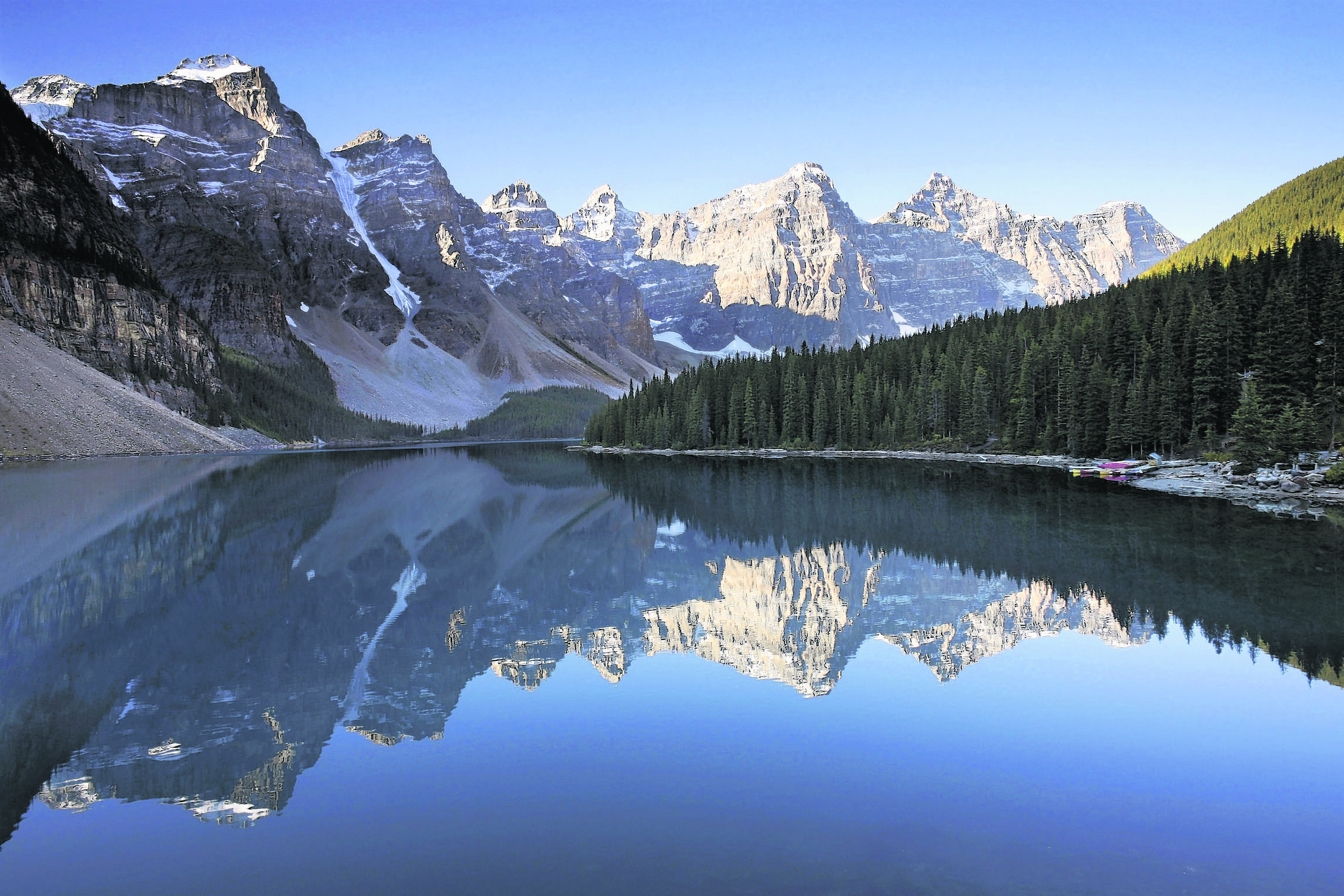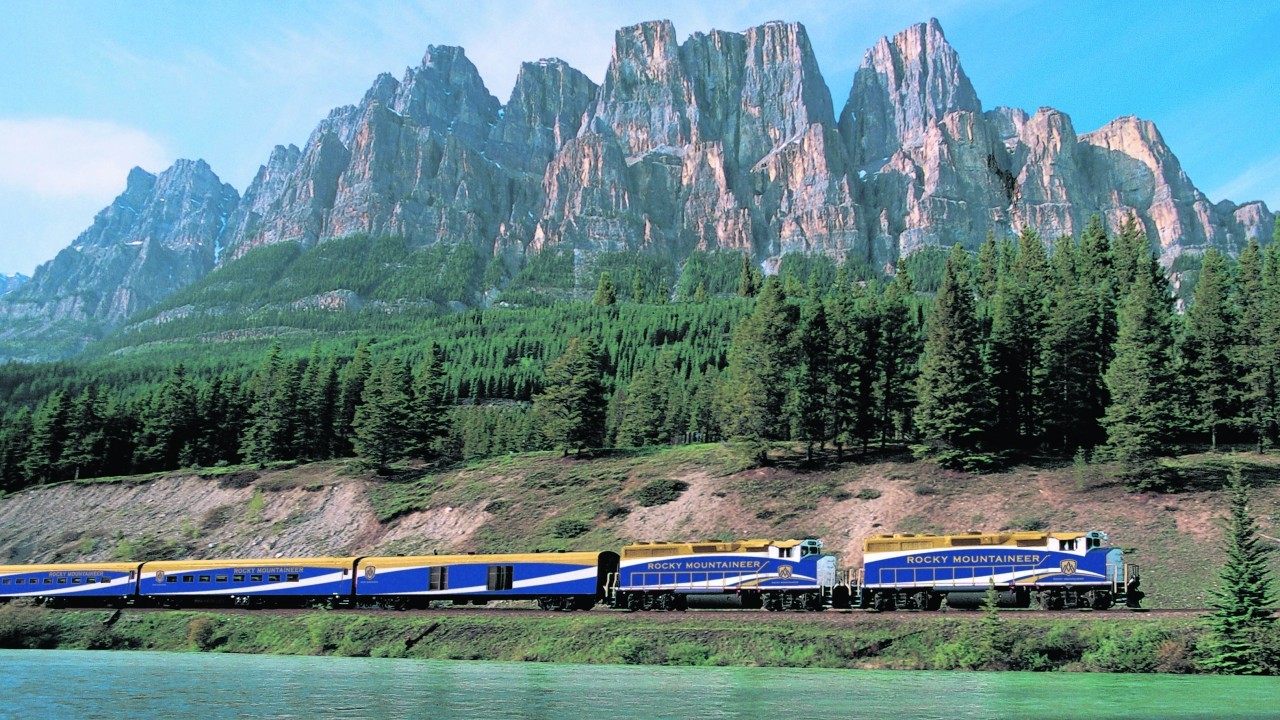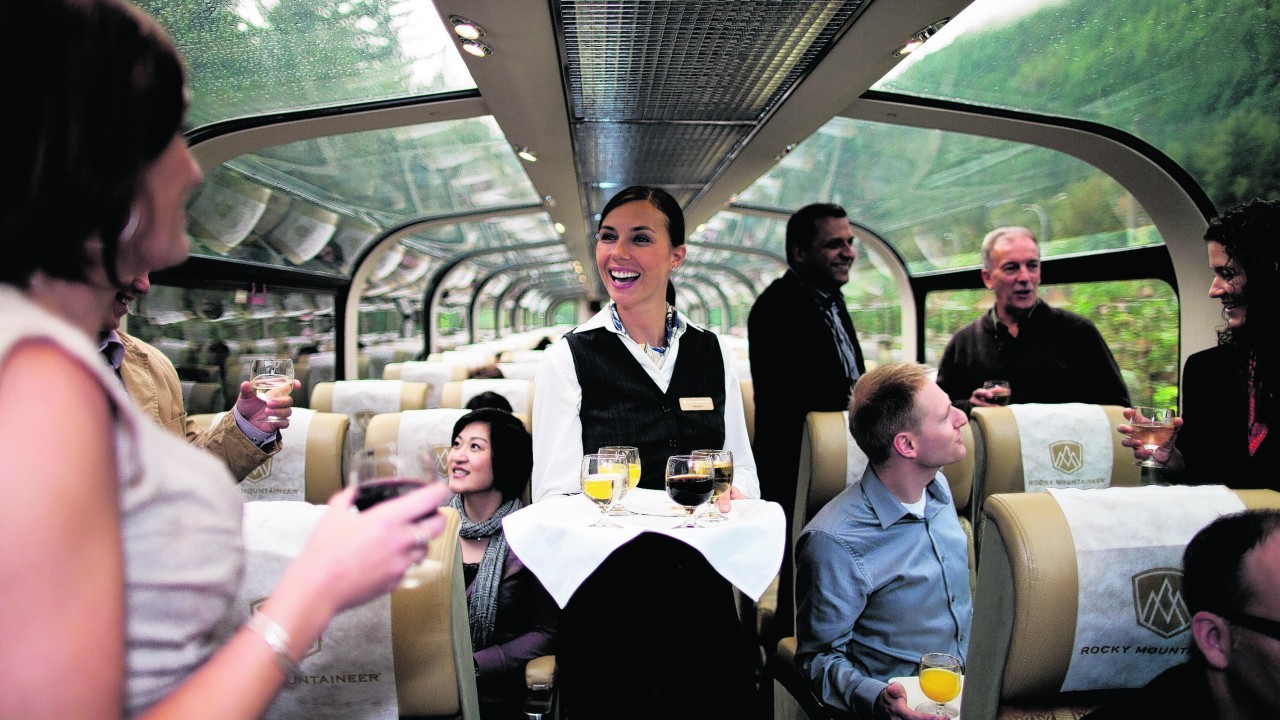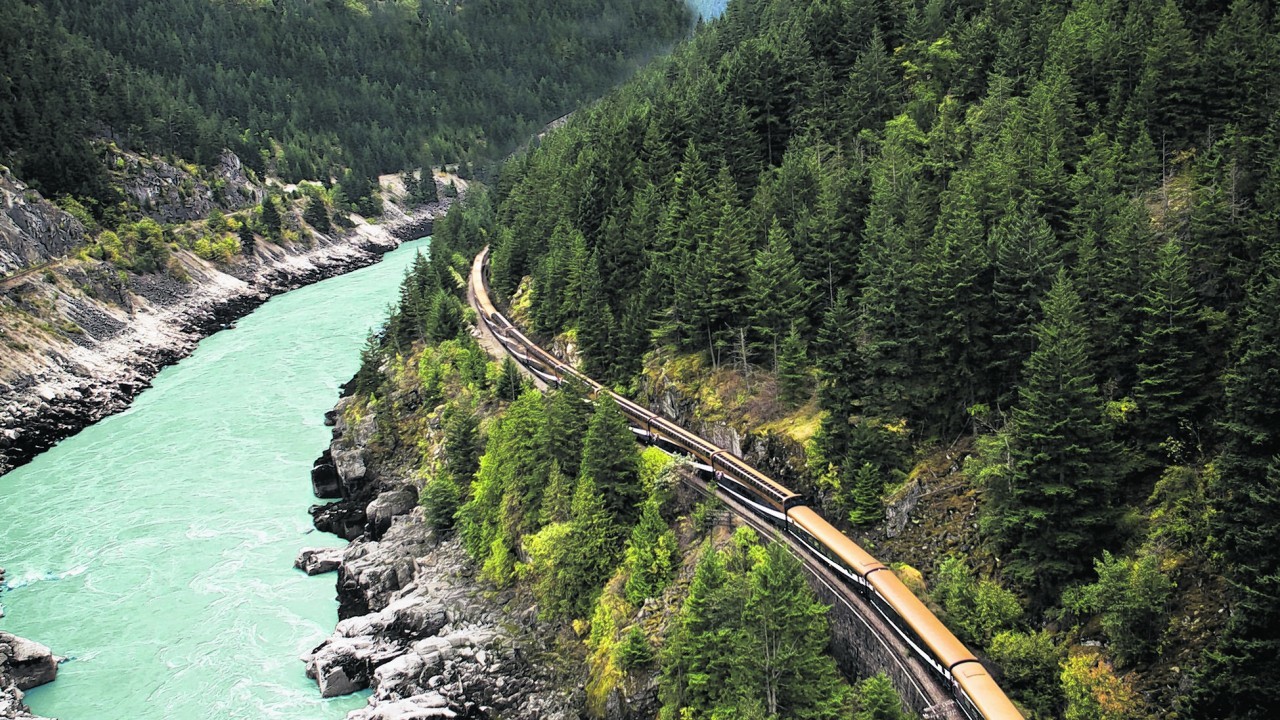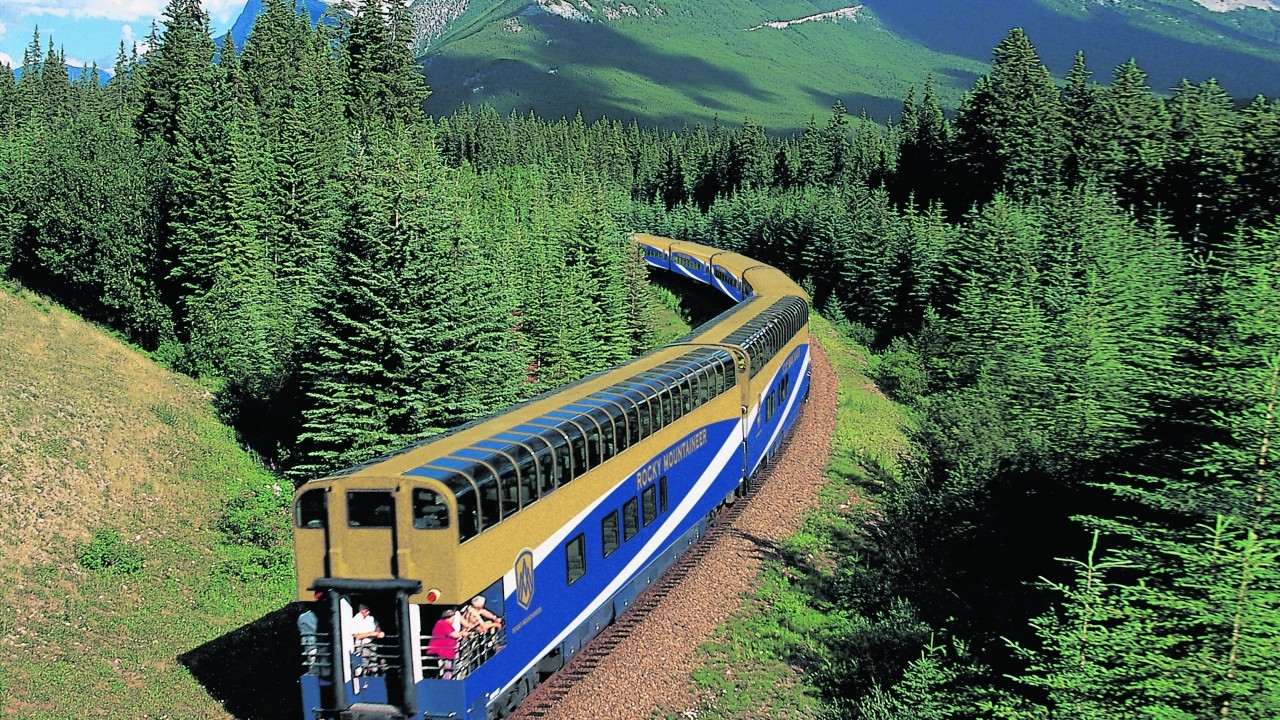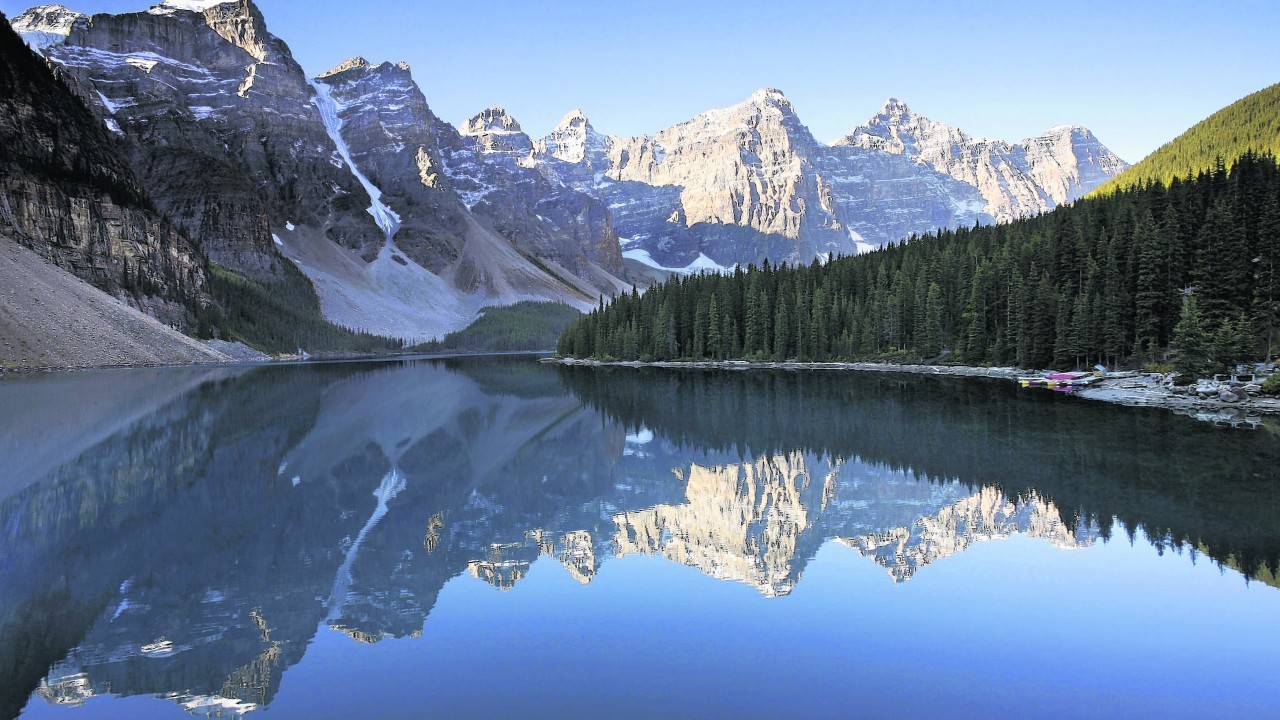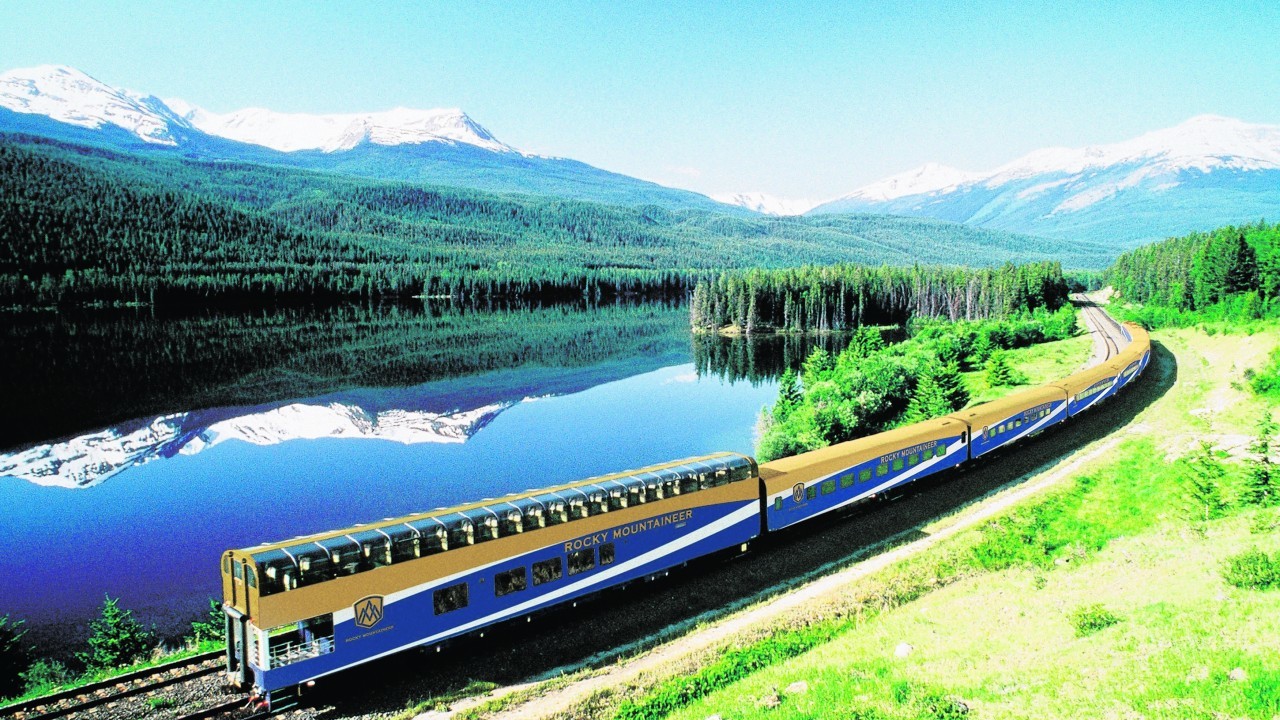Dangling only metres above a grizzly bear, whose gaze has locked directly with mine, is not an entirely comfortable experience.
As the bear ambles along a rough track, I look down from the safety of my gondola at one of western Canada’s premier ski resorts.
“They just think we are big birds,” says my guide reassuringly.
This beautiful wilderness east of Vancouver in the Rocky Mountains attracts up to four million visitors a year.
The area opened up to tourism more than a century ago with the railway line from the east, and I’m retracing the most scenic part of the route in style, on full-service train The Rocky Mountaineer.
My bear encounter takes place in Banff, Canada’s first national park, and is one of the highlights of the trip. Banff National Park is a World Heritage site covering more than 6,600sq km of Rocky Mountain territory.
Founded in 1883, after workers went looking for gold and instead found hot springs at what is now The Cave and Basin National Historic Site, it became a magnet for tourists and explorers.
Sir William Cornelius van Horne, who oversaw the building of the spectacular railway line, said: “If we can’t export the scenery, we’ll import the tourists.”
My two-day trip begins when I board the First Passage to the West service in Vancouver. My luggage is transported separately to overnight hotel accommodation, so I can comfortably settle into my carriage.
The Scottish bagpiper send-off reminds me that this railway was founded by a Scotsman and part-financed by Britain’s Barings Bank.
Inside my plush carriage, I enjoy Merlot and cheese as part of the SilverLeaf service; GoldLeaf (the next class up) offers a la carte dining in a restaurant car and first floor seats for even better views.
Water and fresh fruit is available at all times, supplementing the modestly-sized and beautifully presented portions at meal times.
The outside viewing area, the space between carriages, is tight, with room for two people at a squeeze on each side – so competition for photo opportunities is fierce. Most people seem happy to stay in their carriages.
A cheery young chef called Alistair carefully serves a country scramble of local eggs, cheddar cheese, mushrooms and Canadian bacon, while well-informed staff members provide commentary on the surroundings.
The train, newly decked out in dark blue and gold paint, traverses “avalanche alley”, where numerous rock shed tunnels protect the line from falling boulders. Pine trees cling to dry slopes forming a stubbly line along ridges.
Some mountainsides are devoid of vegetation, like sci-fi film sets. A man wields a sledgehammer on a sleeper in the middle of nowhere, evoking visions of rock-breaking pioneers who first laid tracks through this unyielding limestone.
The train makes its way leisurely around long sweeping bends while big horned sheep scamper away, and it coasts through the isolated ghost town of Walhacin, populated by English gentry and then abandoned at the onset of the Great War.
We skirt a former quarantine centre for tuberculosis victims, now just a few wooden agricultural sheds.
The sparse settlement was self-sufficient as its inhabitants could not contact the outside world, instead growing all their own vegetables. It later became an institution for the mentally ill.
We approach the city of Kamloops, high on a desert plateau and with a small town feel, where we break up our journey by staying the night, an integral part of passengers’ trip, at the Thompson Hotel.
It is a short walk from the centre and close to the tracks, the horns of freight trains audible. I dine next door that night, in The Noble Pig brewhouse, eating breaded hot peppers and a gloopy mash of potato, melted cheese and beer gravy, washed down with locally-produced Amber Ale.
The second leg of our adventure proves to be even more dramatic.
Two women sip morning coffee on the antebellum-style porch of a white-painted timber home, overlooking the river as the train edges its way smoothly eastwards.
Clouds shroud the peaks and the smell of pine fills the air.
The train enters spiral tunnels, corkscrewing dramatically through the mountains.
Near the Continental Divide, the highest point in North America, the serrated edges of the Rockies protrude, leading to great peaks like Castle Mountain.
We finally arrive at Banff, where I check into the Caribou Lodge & Spa for a few days. The inviting Alpine-style hotel combines rustic charm with comforts such as a basement swimming pool.
An engineer who helped build the train line wrote of Banff: “It will be a great resort for tourists and madmen who like climbing mountains at the risk of breaking their necks.”
I shun the daredevil treks for a more leisurely route, admiring the fragile alpine flowers bursting through the melting snow.
I’m told Lake Louise Ski Resort, where the Prince and Duchess of Cambridge honeymooned, offers my best chance of a bear close encounter.
“You’re on your own watch if you go out there without a guide,” my host warns.
I think of the grizzlies below the gondola and decided to sit back and have another beer.
TRAVEL FACTS
:: Michael McHugh was a guest of the Rocky Mountaineer. Canadian Affair (www.canadianaffair.com; 020 7616 9184) offer a five-night trip to Canada including a journey on the Rocky Mountaineer from £1,209pp. Flights extra.
